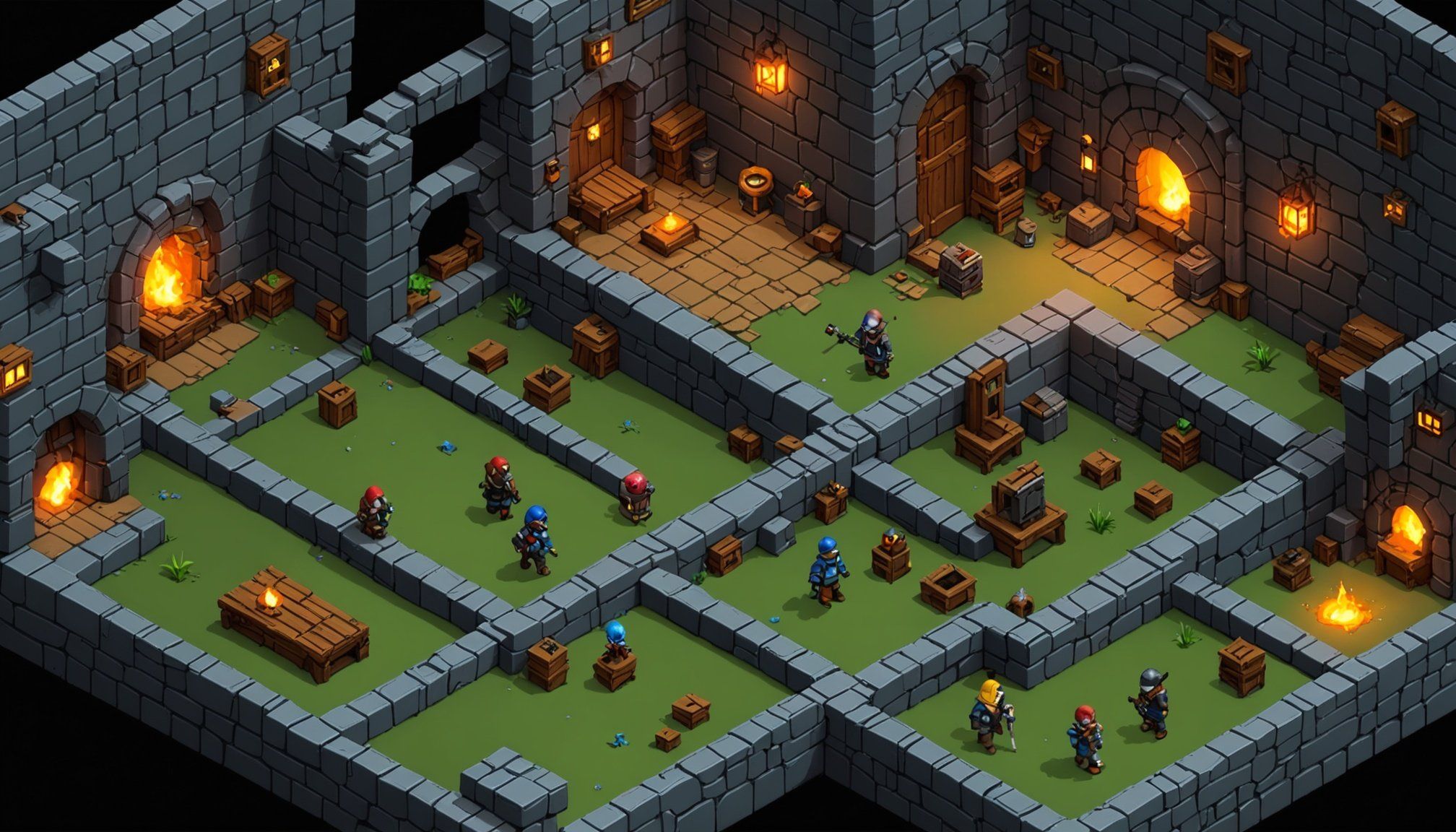The Role of AI in Game Design
The integration of AI in game design has significantly transformed the game development landscape. Historically, procedural generation provided a means to create game elements algorithmically, enhancing development efficiency. Early forms of procedural generation were mainly used to build game maps and levels, often used in game development tools to generate environments with limited human intervention. However, this method sometimes lacked the creativity characteristic of uniquely human designs.
In recent years, a shift towards AI-driven creativity enhancement has emerged, allowing AI to break traditional limitations. While procedural generation focused on creating content systematically, AI now contributes to crafting more intricate and imaginative game elements. This advancement assists game designers in augmenting creativity by automating mundane tasks and helping conceptualize novel ideas.
Also to discover : Next-Gen Wildlife Simulations: Unlocking Immersive Gaming Experiences with Real-Time Biome Data
AI in game design enhances creativity and expands the possibilities of what can be created, driving evolution in digital storytelling. For instance, AI algorithms might handle world-building, where the narrative adapts dynamically to player choices, enriching user experience. The ability to procedurally generate environments coupled with AI’s creative input provides developers with powerful tools to deliver unique, engaging games. This melds technological capabilities with visionary design, helping to realize concepts previously thought unattainable.
Techniques for Implementing AI in Level Design
AI’s involvement in level design has revolutionised how games are structured, resulting in exciting and varied experiences. AI techniques for level design optimise the use of computational algorithms to organise and create game environments. This is a marked progression from traditional methods, providing developers with new avenues for creativity.
In the same genre : Discover affordable valheim server rental for endless fun
Adaptive Level Generation
Adaptive level generation allows a game to dynamically respond to a player’s choices and strategies. Using procedural generation techniques, AI can tailor environments in real-time, adjusting difficulty and layout to maintain engagement. This means each player interaction might lead to a unique experience, enhancing replayability and personalisation. Adaptive algorithms help in catering to different playstyles, offering a customised gaming experience that’s both challenging and rewarding.
Neural Networks in Game Design
Incorporating neural networks into game development tools provides designers with the ability to craft levels that evolve and adapt. These networks can simulate numerous scenarios swiftly, assisting in designing layouts that are both innovative and functional. They are valuable in recognising patterns and preferences, making them integral to advancing procedural content generation.
Reinforcement Learning for Game Mechanics
Reinforcement learning is central to game development tools for delivering dynamic feedback and progression. It encourages games to develop intuitive mechanics that adjust to player actions, fostering an engaging loop of challenge and adaptation. This technique enhances AI’s role in crafting not just static designs but living, breathing worlds.
Case Studies of AI-Driven Roguelike Games
AI-driven roguelike games have gained attention for their innovative use of procedural generation and intelligent systems to create unique player experiences. These games often exemplify procedural innovation by offering dynamic and varied challenges that keep players engaged.
Notable examples include “Dead Cells” and “Hades.” Both titles utilise procedural generation to craft levels that change with every playthrough, ensuring unpredictability and replayability. In “Dead Cells,” AI impacts how enemies behave, adapting to player strategies and increasing the game’s complexity. Meanwhile, “Hades” uses narrative-driven replayability, with AI aiding in story progression based on player choices, making each run feel rewarding and purposeful.
Several lessons have been learned from the successes and failures of AI application in these games. A critical insight is balancing randomness with controlled design elements to maintain player satisfaction. Too much procedural generation without oversight can lead to unenjoyable or bland experiences. Conversely, intelligent AI can enhance creativity and offer fresh interactions with each play session.
These case studies highlight both the triumphs and challenges faced in integrating AI into game design, offering valuable lessons for future developments in the genre.
Challenges and Limitations of AI in Game Design
While AI in game design offers numerous advantages, it also presents significant challenges and limitations developers must navigate. One major challenge is the unpredictability of outcomes generated by procedural generation. Developers must often balance randomness with a degree of control to ensure engaging and coherent gameplay. Without proper oversight, procedurally generated content might result in repetitive or non-intuitive game experiences.
Quality control in procedural generation techniques is another hurdle. Ensuring content is designed with a consistent level of polish and enjoyment can be problematic when relying heavily on algorithms. This can lead to experiences that may not meet players’ expectations for variety and engagement.
Furthermore, ethical considerations often arise when AI is implemented in games. For instance, developers need to thoughtfully design AI to avoid scenarios where outcomes might cause frustration or negatively impact the player experience. The implications of AI ethics in gaming extend to ensuring AI respects player privacy and autonomy.
Ultimately, developers need to carefully manage the use of AI to overcome these challenges. Properly addressing these limitations can lead to improved gaming experiences but requires thoughtful planning and testing to ensure quality and player satisfaction.
Future Trends in AI and Procedural Generation
The future of AI in gaming is poised for remarkable advancements as technology continues to evolve. Upcoming trends include the integration of innovative procedural generation techniques, which promise to enhance how game worlds are created and experienced. Such technologies will likely make games more immersive, offering complex, dynamic environments that react intelligently to player actions.
A key area of focus is the development of new tools and technologies designed to address current limitations. These advancements aim to offer developers increased flexibility and control, enabling more nuanced manipulation of game narratives and mechanics. Innovations may include AI-based content curation systems that refine game elements based on player interactions and preferences, thereby enhancing personalization.
Community feedback will play a crucial role in shaping these future trends. Developers are increasingly harnessing player insights to refine AI systems, ensuring they align with user expectations and enhance engagement. This collaborative approach allows gaming communities to directly influence the design of intelligent systems, driving innovation in unexpected directions and ensuring games evolve in ways that are both surprising and rewarding. Together, these trends indicate a future where AI not only supports creativity but actively collaborates with players to craft unique gaming experiences.











